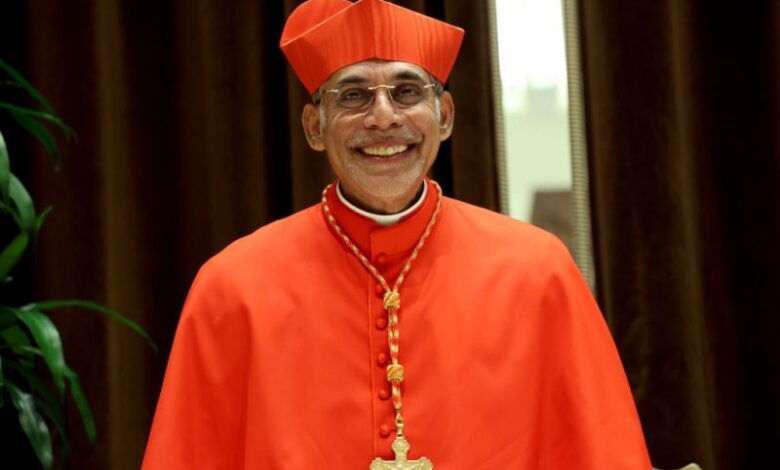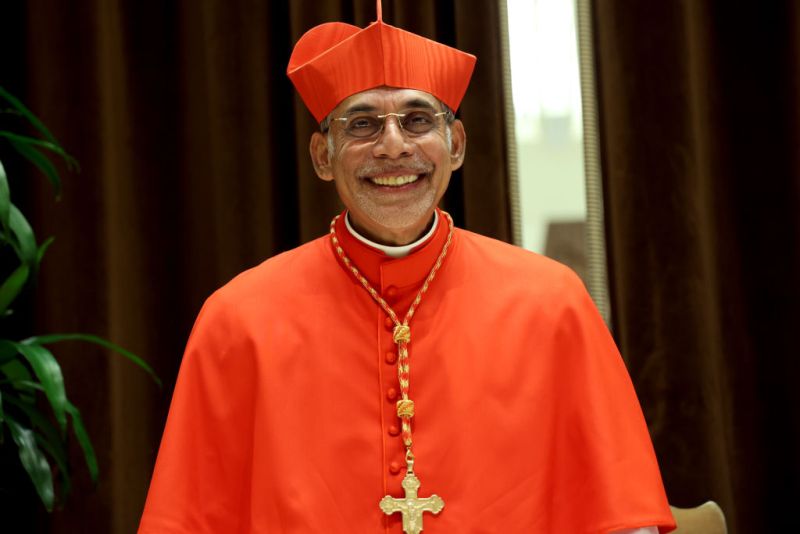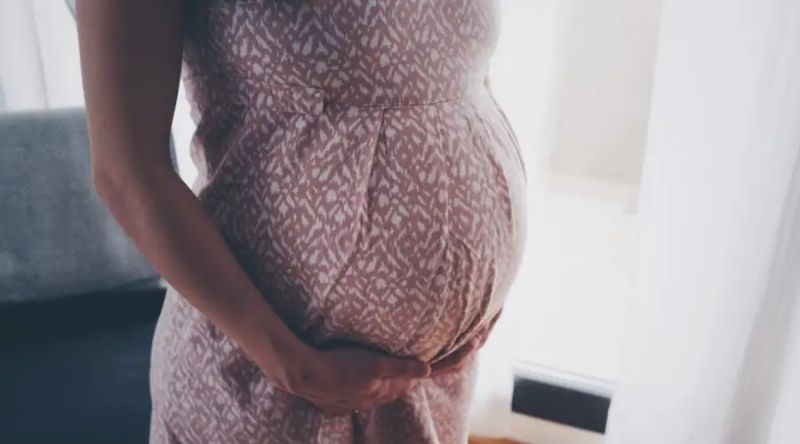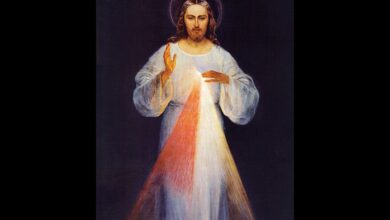Indian Cardinal Ferrão to head Asian bishops’ conference amid Church’s continued growth

 Cardinal Filipe Neri Ferrão on Aug. 27, 2022, in Vatican City. / Credit: Franco Origlia/Getty Images
Cardinal Filipe Neri Ferrão on Aug. 27, 2022, in Vatican City. / Credit: Franco Origlia/Getty Images Rome Newsroom, Feb 26, 2024 / 16:30 pm (CNA).
Cardinal Filipe Neri Ferrão, the archbishop of Goa and Daman, was elected as the new president of the Federation of Asian Bishops’ Conferences (FABC) during the assembly’s meeting in Bangkok, Thailand, on Saturday, Feb. 22.
Ferrão, 71, will replace outgoing president Cardinal Charles Maung Bo, archbishop of Yangon, Myanmar, and his three-year term will start in January 2025.
The Goan prelate currently serves as president of the Conference of Catholic Bishops of India, which is the national episcopal conference of the Latin rite in the country. This is a distinct body from the Catholic Bishops’ Conference of India, which is a supra-national assembly of Latin-rite bishops as well as the eparchial bishops from the Synod of the Syro-Malabar Church and the Synod of the Syro-Malankara Catholic Church.
Despite a sharp decline in Church membership in Western Europe and North America, amid a net increase in the global number of baptized Catholics, the Church in Asia has experienced continued growth.
According to 2021 figures released by the Annuarium Statisticum Ecclesiae, the statistics office of the Holy See, the total number of Catholics in Asia is 149.1 million, or 3.31% of the region, which has an estimated population of 4.5 billion people. However, out of the total number of religious sisters across the globe, 175,494, or 28.9%, live in Asia, and there was a 1% growth in the number of priests from 2019 figures.
The increase in the Catholic population in Asia and its growing importance on the global stage has also been reflected in Pope Francis’ decision to expand representation to Asian countries in the College of Cardinals.
Currently, out of the 129 cardinal electors — cardinals under the age of 80 who are eligible to vote in a future conclave — 22 come from Asia, giving the region the second-largest representation in the sacred body.
In the Aug. 27, 2022, consistory in which Ferrão received the red biretta, Mongolia, East Timor, Singapore, and South Korea all gained new cardinal electors. All four of the aforementioned countries are represented in the FABC. Pope Francis made history as the first pontiff to visit the landlocked country of Mongolia in 2023.
During the last several years of Pope Francis’ pontificate, there has also been renewed diplomatic activity in the region, evidenced by the 2023 agreement between the Holy See and Vietnam that allowed for permanent resident papal representatives in the country. That increased activity has also been evidenced in the recent flurry of episcopal appointments in the People’s Republic of China, in accordance with the provisions of the Sino-Vatican Accord, which is up for renewal in October.
However, the Church in Asia is not without its problems, ranging from concerns over deteriorating religious freedom in Hong Kong to a fierce internal divide in the Syro-Malabar Church over the proper orientation of the celebrant during the Mass, a debate that prompted a papal intervention and ultimatum in December 2023.
In November 2023, Fides reported on Ferrão’s remarks to a gathering of 300 Indian priests, religious, and seminarians in Rome where he reflected on the multicultural context of the Church in India, which he described as a “tapestry of beautiful cultures, languages, ethnicities, and rituals” while stressing the importance of maintaining a “solid cultural and national identity among Indian priests.”
The FABC was established during a meeting of 180 Asian bishops in Manila, Philippines, on Nov. 29, 1970. Pope Paul VI, who was in the Philippine capital during his historic seven-day apostolic trip to Asia, Oceania, and Australia, spoke to the newly created assembly, praising it as a tangible example of the reforms of the Second Vatican Council and as representing a major step forward in the process of inculturation, or ecclesial localization.
The pan-Asian conference is currently made up of 17 episcopal conferences (representing 27 countries) as well as the Synod of the Syro-Malabar Church and the Synod of the Syro-Malankara Church as full members. It also counts the Diocese of Hong Kong, the Diocese of Macau (both special administrative regions of the People’s Republic of China), and the Apostolic Vicariate of Nepal as associate members.
While the Chinese Regional Bishops’ Conference, the episcopal conference of the Republic of China (Taiwan), is an associate member, the Bishops Conference of the Catholic Church in China, the episcopal conference for bishops in the People’s Republic of China — which is not recognized by the Holy See — is not part of the body.
Ferrão was born in the village of Aldona, located in the northern part of the state of Goa on the country’s western coast, in 1953. He was ordained to the priesthood in 1979 and, after serving in a variety of pastoral roles in his home diocese, he studied at the Pontifical Urban University, where he obtained a licentiate in biblical theology in 1988 and a licentiate in catechetics and pastoral theology from the Brussels-based Lumen Vitae International Institute in 1991.
He was appointed auxiliary bishop of Goa and Daman by Pope John Paul II in 1993, and in 2004 he was made archbishop of the same diocese, a position that also carries the titles of primate of the East and patriarch of the East Indies, given the historic importance of the city of Goa for the Portuguese Empire and as a gateway for the entry of Catholic missions into Asia from the early 16th century onward.
Ferrão is a polyglot and speaks Konkani (one of the 22 constitutionally recognized languages in India and the official language of the Indian state of Goa), English, Portuguese, Italian, French, and German.




